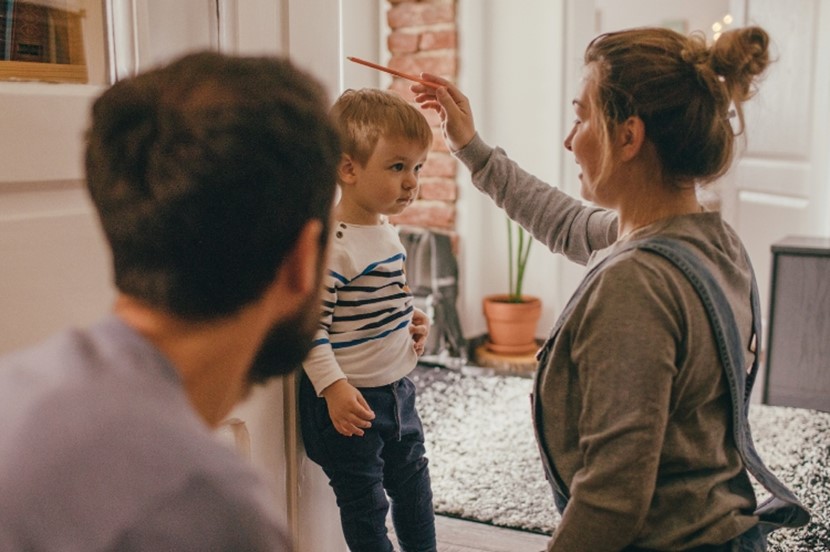Hoping for baby no. 2?

Secondary infertility can come as a real shock, especially if you conceived easily the first time around. We asked Dr Andrew Murray to shed some light on the issue.
Parents are often asked seemingly harmless questions about their family status. “Have you just got the one child?” “When do you plan on having another?” “What age gap are you hoping for?” “How many children do you want?” But it’s not always a given that little Jimmy will get a baby sister with a tidy twenty-four-month age gap. And many people don’t realise secondary infertility is a ‘thing’, so have no idea how hurtful those questions can be.
Secondary infertility can be a real shock, especially for couples who conceived easily the first time around. Defined as the inability to become pregnant or to carry a baby to term after previously giving birth, secondary infertility shares many of the same causes of initial infertility.
At Fertility Associates, we have a large number of people coming to see us because they’re having trouble making baby number two. The number is so big that we estimate at least 50% of our client base is suffering from secondary infertility. The condition itself is rather ambiguous and can be caused by a range of issues, such as impaired sperm production, fallopian tube damage, ovulation disorders or complications related to prior pregnancy or surgery.
NATURE'S TIMING
Often when we see couples they will ask, “Why isn’t getting pregnant as easy as last time?”. A major factor is age. As women get older, their eggs age too. Their biological clock is crucial to fertility, and this is especially so for women experiencing secondary infertility.
A woman may have had her first baby when she was 35 years old. She may then wait till her baby is two or three years old before starting to try for baby number two. By this time, she is 37–38 years old, and her chance of conceiving each month has reduced from 16% at 35 to 11% at 38. Often couples will start trying to get pregnant and before they know it, six months have passed, and then eight months, and suddenly a whole year has gone by, but still no baby.
Other causes of secondary infertility could be linked to a woman’s damaged fallopian tube(s), ovulation abnormalities and uterine conditions, such as scarring and endometriosis, or weight change.
MALE FERTILITY
Men are also part of the equation and, since their first baby, they may have developed a male fertility factor such as impaired sperm production, function or delivery. In about half of all infertility cases, the male is an important contributor. In recent years there’s been more emphasis on the quality of sperm, rather than their quantity – including DNA damage.
For conception to take place, sperm go on a heroic journey. Imagine that instead of sperm, we have millions of tiny Bear Grylls. If we could enlarge a sperm to the actual life-size of Bear Grylls, the distance he’d have to swim is roughly equivalent to the width of the Atlantic Ocean. And he’d have just 12–24 hours to find his prize (the egg), as that’s how long the egg will survive unless it’s fertilised. Sperm must be fighting fit for a successful conception!

STUCK IN THE MIDDLE
Couples experiencing secondary infertility can feel as though they’re somewhere in the middle: between those going through infertility as they try for their first child, and those who have leapfrogged them and have already completed their family. The emotional impacts of secondary infertility are very real, and can be quite public. The pressure mounts as well-meaning friends and family members, and even complete strangers, ask when Number Two is coming, and because secondary infertility is often unexplained, not having a definite explanation can add to the stress. However, the good news is that the prognosis for unexplained infertility can be positive with fertility treatment. If there is no defined condition to overcome, then fertility treatment can be a good solution.
When it comes to fertility, timing can be everything. Sometimes just understanding your own cycles and when to try for a baby can be all the information a couple needs. However, finding the time to try might be a little more difficult the second time around!
TIME FOR SPECIALIST HELP?
At Fertility Associates we would ultimately treat secondary infertility in the same way we would treat a couple trying for their first pregnancy. We would undertake the standard fertility tests to check if there was any clinical reason they were not conceiving, and then advise about the best treatment option – which could be a gentle nudge with medication, or perhaps a managed cycle of fertility treatment.
|
Fertility Associates offer a FREE Nurse Consult where you can talk through your options. Book online at fertilityassociates.co.nz |
WHAT CAN YOU DO?
One easy thing you can do is to check your own biological clock. Visit fertilityassociates.co.nz to see what your fertility chances are for your age, and for advice about how long you should try for before seeking help.
If you’re worried, I would suggest an initial consultation with a fertility specialist to talk through your options. This will help you understand your own chances of conceiving, and you’ll be able to do some tests to ensure everything is working properly. Becoming better informed is the very best thing you can do.
|
Dr Andrew Murray is Medical Director of Fertility Associates Wellington. He’s also a senior lecturer at Wellington School of Medicine and a consultant obstetrician and gynaecologist at Wellington Hospital. |

AS FEATURED IN ISSUE 46 OF OHbaby! MAGAZINE. CHECK OUT OTHER ARTICLES IN THIS ISSUE BELOW

















